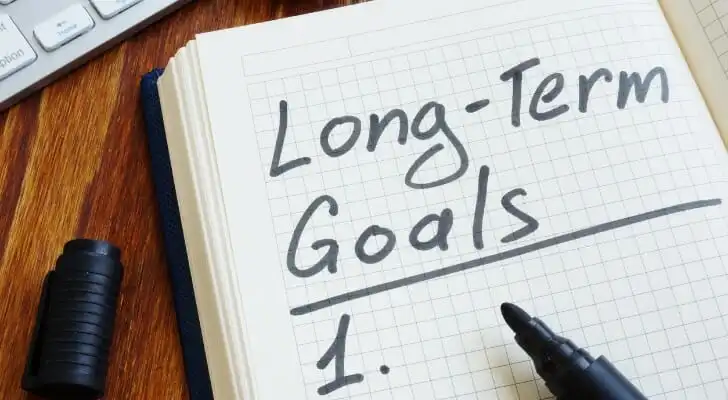Investing $1,000 per month for 30 years at a 6% rate of return hypothetically will give you an investment portfolio worth more than $1 million. This result is hypothetical because it doesn’t take into account taxes, fees, varying rates of return and other variables, such as extended market downturns. However, this scenario does show that thanks to the power of compounding, under ordinary circumstances investing even a relatively modest amount on a regular and continuing basis can result in an impressive accumulation of wealth. You can ask a financial advisor for insight into how to build your wealth through investing.
How Much Investing $1,000 Per Month Pays Long-Term
The precise amount you’ll have after investing $1,000 monthly at 6%, a conservative number depending on what you choose to invest in, for 30 years is $1,010,538, as figured by SmartAsset’s free online Investment Calculator. The actual amount you would have if you followed that investing plan could vary significantly, however. The result depends on a number of factors from how much you contribute over time to how you invest your funds.
The average return in the stock market has been roughly 10% annualized over the past century. Here’s how much you would have earned with that return, depending on how long you hold those investments in the market.
- 10 Years: $207,552
- 20 Years: $766,697
- 30 Years: $2,280,325
Key Variables Affecting Investment Growth
As mentioned above, there are key variables that are going to impact how much you’re able to actually earn when investing this frequently. These variables include:
- Initial investment amount: The examples above assume that you have no initial starting capital beyond the first monthly $1,000 investment. If you had a larger initial amount, such as $10,000, under the same scenario after 30 years your portfolio would be worth $1,064,741.
- Amount of regular contributions: The amount and schedule of your regular contributions are highly important. If you reduce your contribution to $500 monthly, your portfolio after 30 years would be worth $508,280 at the 6% return rate. Increase the frequency of your $1,000 contribution to bi-weekly and the end result is $2,188,787.
- Rate of return: A 6% return is a mid-range figure for long-range annual investment. If you get a more conservative 4%, the final figure would be $697,363. If you achieve 8% growth, you would wind up with $1,501,295.
- Investment time horizon: Thirty years is a typical investment time horizon for a retirement saver. If you were within 10 years of retirement or saving for a different short-term goal, after a decade your portfolio would be worth $465,351, all else staying the same.
Factors Affecting the Variables
Asset allocation has a large impact on how your portfolio will grow. If you put more money into stocks, which have an annual return averaging nearly 10% as measured by the S&P 500, you may get a higher rate of return. However, stocks are riskier than some other assets, such as fixed-income investments. If you’re more risk-averse and emphasize bonds, which have a historical rate of return of about 5%, your portfolio likely will generate smaller annual gains.
In practice, the best long-term performance usually comes from a portfolio allocated to a blend of stocks, bonds and other assets, such as cash and alternative investments. A portfolio with a middle-of-the-road asset allocation will yield somewhere between 5% and 8% for many investors, such as people with 401(k) plans.
The example doesn’t take into account significant elements that could affect any portfolio. For example, fees paid to investment managers and others involved with your portfolio can slow the accumulation of wealth. The Securities and Exchange Commission calculated that a portfolio with an initial value of $100,000 that earns 4% for 20 years and pays 1% in annual fees will be $30,000 smaller than one that pays only 0.25% in fees. Investors can choose low-fee options, such as exchange-traded funds, but all portfolios incur some fees.
Taxes are another element that must be considered. Marginal federal taxes on ordinary income range from 10% to 37%. Federal income tax rates on capital gains from investments can be 0% to 15%. Most states also levy income taxes. Unless your investment portfolio is in a tax-advantaged account, such as a 401(k), taxes will reduce its growth.
Inflation by itself won’t reduce the growth of a portfolio, although high inflation and actions by central banks to control inflation can have a potentially negative effect on markets and portfolio return. However, inflation does reduce purchasing power. That’s why portfolios include assets such as stocks that, while riskier than cash, have the potential to produce returns in excess of inflation.
Unexpected personal and economic events also can affect a portfolio. Misfortunes such as loss of a job, poor health or disability and sustained recessions or even depressions can mean an investment plan fails to live up to initial expectations. On the other hand, your income may rise faster than forecast, allowing you to put away larger amounts, and your investments may produce better returns than anticipated. These events can’t be forecast with certainty.
The Bottom Line
If you put $1,000 into investments every month for 30 years, you can probably anticipate having more than $1 million by the end, assuming a 6% annual rate of return and few surprises. Making larger or more frequent contributions, achieving a higher rate of return and using a longer investment time horizon will all likely result in a significantly larger accumulation of wealth. However, numerous variables, some hard to predict, could affect the plan. Inflation, taxes and fees are three that impact all portfolios. Unexpected events such as an extended market downturn, or positive developments such as a sustained boom could also change the outcome.
Tips for Investing
- Talking to a financial advisor can help you develop a plan to invest regularly and wisely. SmartAsset’s free tool matches you with up to three financial advisors who serve your area, and you can interview your advisor matches at no cost to decide which one is right for you. If you’re ready to find an advisor who can help you achieve your financial goals, get started now.
- As the date funds will be needed for retirement or another objective approach, portfolios are usually shifted into a more conservative stance with increased emphasis on fixed-income investments. Target-date funds are special investment vehicles that manage this adjustment automatically so that you’ll get rapid growth when you can take on more risk and conserve capital as your risk tolerance shrinks.
Photo credit: ©iStock.com/tdub303, ©iStock.com/designer491, ©iStock.com/designer491


